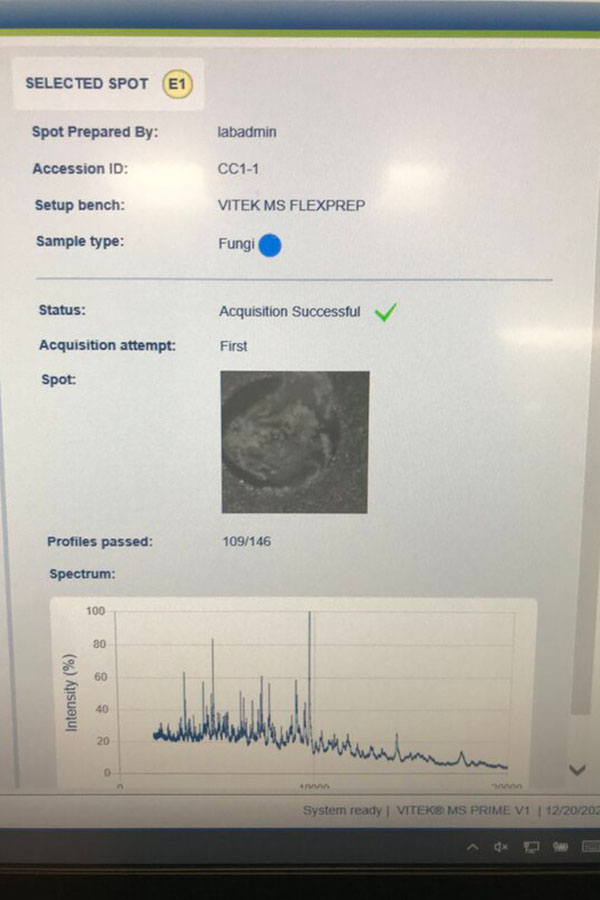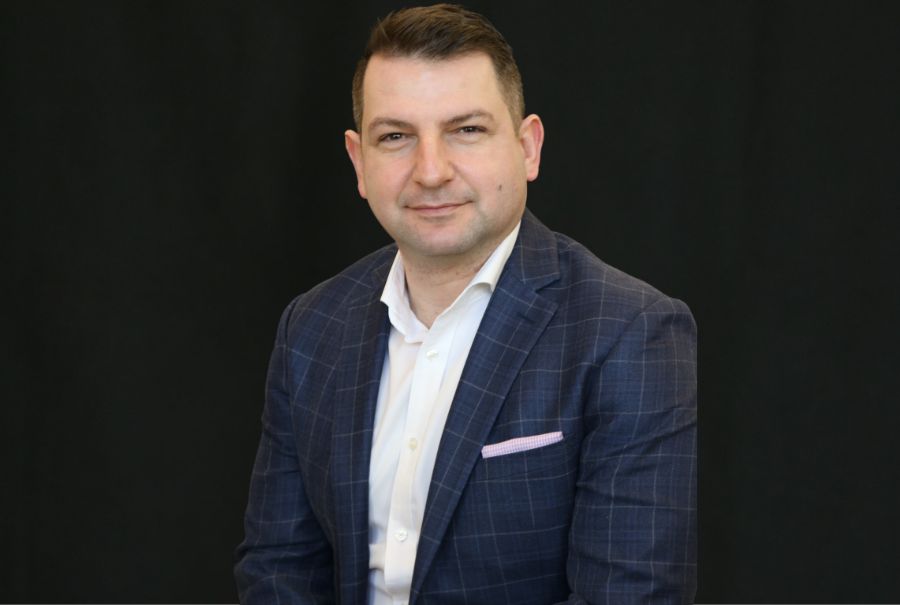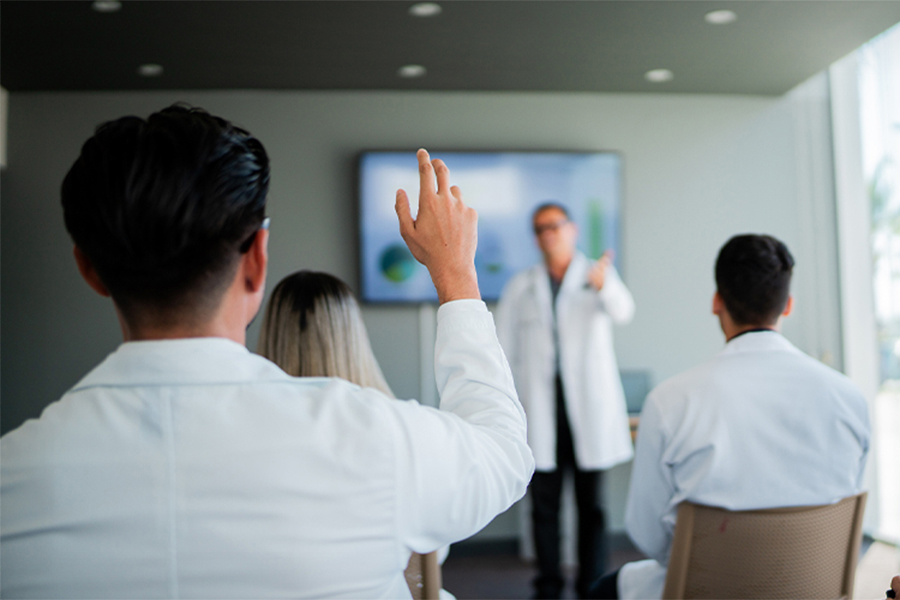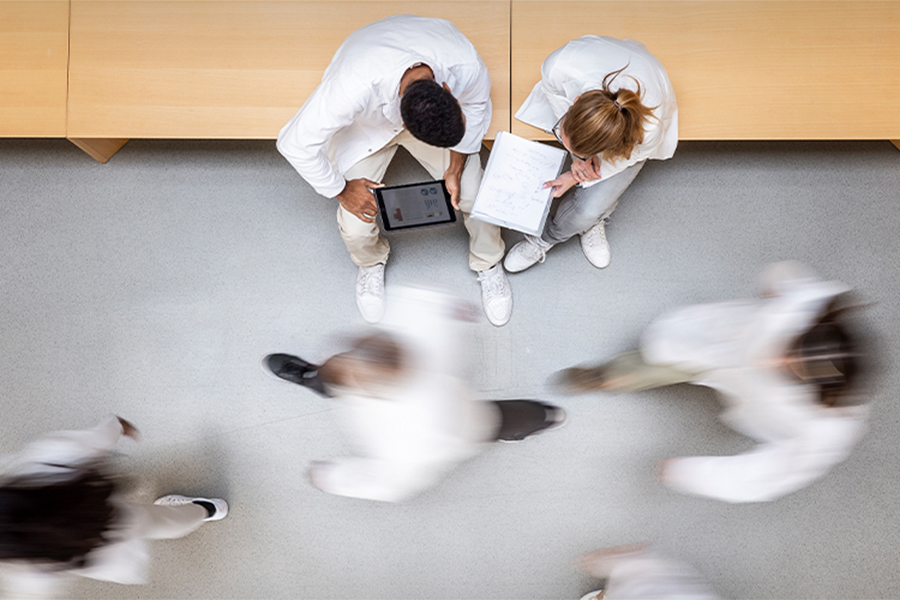Dr. Peter Bridge, Chair of Medical Laboratory Science at the Michener Institute of Education at UHN, with the matrix-assisted laser desorption ionization – time of flight mass spectrometry (MALDI-TOF MS), which he calls “revolutionary technology” that will better prepare students to step into the clinical environment after graduation. (Photo: UHN)
Since January, the Michener Institute of Education at UHN has been the only school in Canada to teach with the most cutting-edge microbiology instrument being used in a laboratory setting, a development which makes students even better prepared for the transition to clinical work after graduation.
Matrix-assisted laser desorption ionization – time of flight mass spectrometry (MALDI-TOF MS) was first introduced into routine testing in microbiology labs about five years ago. During the process, microbes are identified using either intact cells or cell extracts, a process which is rapid, sensitive and economical in terms of both labour and costs involved.
“This was a revolutionary technology that could save a lot of time by identifying bugs and infections days faster than traditional methods, thus allowing you to start the right antibiotics sooner,” says Dr. Peter Bridge, Chair of Medical Laboratory Science at Michener.
Traditionally, microbiology labs would take samples such as a nasal swab or sputum – a mixture of saliva and mucus coughed up from the respiratory tract – and put them on a petri dish to grow the organism. That process can take one to two days, after which medical laboratory technologists perform multiple tests to identify what species the organism is, so the patient can be prescribed the correct antibiotics.
What MALDI-TOF MS does is a direct analysis of uncultured or very minimally cultured materials within a few hours, rather than a few days.
While hands-on knowledge of MALDI-TOF MS use is not currently required as part of the national certification exam for medical laboratory technologists, the technology has now become the clinical standard of practice in Canadian hospitals.
Students get ‘direct hands-on experience’
“A few years ago, Michener started teaching MALDI-TOF MS theory in its Medical Laboratory Science Program and even managed to get a few sample files,” says Dr. Bridge.
“Now that the school owns the technology, it can be incorporated into our simulations so that students will have direct hands-on experience with this cutting-edge technology, and therefore go to the clinical sites better prepared and ready to use it,” he says.
Michener’s machine is a second-generation model and only the second of this upgraded type to be installed in Canada. This newer model also has the ability to be integrated with existing microbiology instruments and act as a controller, allowing all of the equipment to work together simultaneously.
“We’re very happy to have this equipment and very excited to start using it,” says Dr. Bridge.



